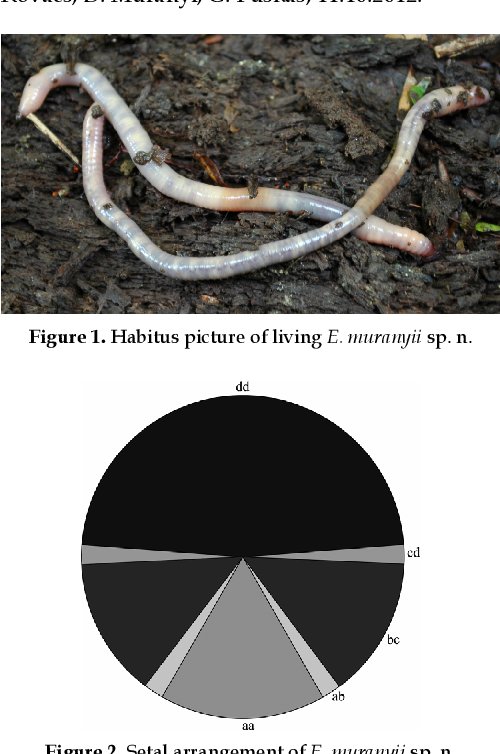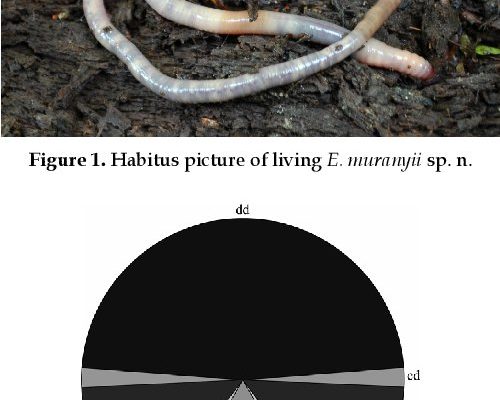
Now, when we talk about worm species that share habitats, we’re diving into a world filled with fascinating creatures like Lumbricus terrestris and the smaller Dendrobaena veneta. These worms all hang out in the soil but have their own lifestyles and benefits. Let’s explore how Eisenia hortensis stands out and what commonalities and differences exist among these soil-dwelling buddies.
Understanding Eisenia Hortensis
Eisenia hortensis is a remarkable worm species, especially for those interested in vermiculture. They thrive in rich, organic matter and are known for their impressive ability to aerate soil. Picture them as the little gardeners of the earth, tirelessly working to improve soil health. These worms prefer moist environments and can often be found in compost heaps or beneath leaf litter.
One of their standout traits is their size; they can grow up to about 4 to 8 inches long. As they wriggle through the soil, they consume decomposing organic materials, turning it into nutrient-rich castings. These castings are like gold for gardeners, enhancing plant growth and enriching soil. So, if you ever find yourself digging in the garden and uncover a European nightcrawler, you can think of it as a sign that your soil is in good shape.
Comparing Eisenia Hortensis to Lumbricus Terrestris
Now, let’s introduce Lumbricus terrestris, often called the common earthworm. Like Eisenia, Lumbricus also plays a critical role in supporting soil health. However, there are notable differences between the two species. While Eisenia hortensis is more commonly found in compost or surface layers, Lumbricus prefers deeper burrows, which can reach several feet down, especially in moist environments.
You might say the common earthworm is more of a deep-sea diver, while the European nightcrawler is a surface swimmer. Lumbricus can grow even larger, sometimes reaching about 10 to 14 inches. This can make them seem more impressive, but size doesn’t always equate to effectiveness. Lumbricus also has a slower reproduction rate compared to Eisenia, meaning it might not replenish as quickly in your compost bin.
Feeding and Habitat Preferences
Feeding habits also vary. Eisenia hortensis excels in processing decaying organic debris, making them fantastic composters. They love to munch on kitchen scraps, turning your waste into valuable compost. Lumbricus, on the other hand, tends to feed on leaf litter and soil, playing a different but equally important role in the decomposition process.
Their habitat preferences are telling too. Eisenia tends to thrive in warmer temperatures and can often be found close to the soil surface, where it’s easy to access organic debris. Conversely, Lumbricus is more tolerant of colder environments and can often be found deeper in the soil, helping to aerate and enrich it from below.
Meeting Dendrobaena Veneta
Another worm worth mentioning is Dendrobaena veneta, often referred to as the brandling worm. This species is smaller than both Eisenia and Lumbricus, typically measuring around 2 to 4 inches. Dendrobaena is often the choice for those looking to produce high-quality compost quickly. They thrive in compost piles and can be incredibly efficient recyclers of organic material.
Interestingly, Dendrobaena veneta has a faster reproduction rate than Eisenia. This can make them a favorite among composters looking to boost their worm populations quickly. They’re also known for being particularly hardy, which is a plus for beginners.
Habitat and Behavior
In terms of habitat, Dendrobaena prefers a warmer, moist environment similar to Eisenia, but they can tolerate a wider range of conditions, making them very adaptable. If you’re looking to start vermiculture, these worms can be an excellent choice since they can thrive in a variety of composting setups.
Each of these worm species has its charm and contributes uniquely to soil health. When selecting worms for your garden or compost, consider their specific needs and how they might fit into your setup.
Why These Comparisons Matter
You might be wondering why it’s essential to compare Eisenia hortensis with other worm species. Understanding their differences helps you make better decisions for your gardening or composting efforts. Each worm contributes differently to the ecosystem: some are great for aeration, while others excel at digesting organic materials.
Having a mix of these species can create a balanced environment in your compost or garden bed. Plus, knowing which worm to introduce can help you tailor your approach to soil enrichment, ensuring your plants are healthy and thriving.
Tips for Choosing the Right Worms
When deciding on the best worms for your compost or garden, consider the following tips:
- Assess Your Environment: Think about your soil type, moisture levels, and whether you want worms that thrive in compost, deeper soil, or both.
- Consider Your Goals: If your aim is quick compost turnover, Dendrobaena veneta might be your best bet. For improving overall soil health, Eisenia might be ideal.
- Mix and Match: Don’t hesitate to use a combination of worm species. Each brings something unique to the table, enriching your garden in different ways.
Final Thoughts
Exploring the world of worms like Eisenia hortensis, Lumbricus terrestris, and Dendrobaena veneta not only enhances your understanding of soil ecosystems but also enriches your gardening experience. Each species has a role to play, from composting to improving soil structure.
So the next time you see a worm wriggling through the dirt, you can appreciate it not just for what it is but for the larger story it tells about our environment and how we can nurture it. Happy gardening, and may your soil be rich and full of life!

